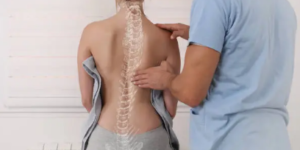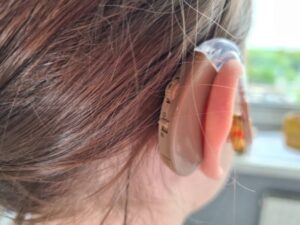Hearing aids with Bluetooth technology are a gateway to a more prosperous life. They can be linked to your mobile phone, TV, MP3 player, and other devices.
Classic Bluetooth consumes too much energy for small devices like hearing aids, so they need the low-power version of Bluetooth called Bluetooth Low Energy or BLE. This uses a smaller battery and has reduced communication range and signal strength. For quality hearing aids Adelaide bluetooth technology, click here.
Streaming Audio
 Most modern hearing aids are Bluetooth-enabled to connect wirelessly to various devices. This can include your TV, mobile phone, and computer. This can be a real game-changer because you can stream music or a TV show directly into your hearing aids.
Most modern hearing aids are Bluetooth-enabled to connect wirelessly to various devices. This can include your TV, mobile phone, and computer. This can be a real game-changer because you can stream music or a TV show directly into your hearing aids.
You can also listen to podcasts or audiobooks and take hands-free calls. The superb sound quality can make a massive difference to your daily life.
Some manufacturers have built-in Bluetooth connectivity, while others offer a separate device to enable it. The best way to find the right solution is to visit a specialist independent clinic offering top brands and prioritise technology and chains, or online stores could compromise on both, and you might not get the guidance you need for the best result. A good example is Adelaide Hearing. They have a wide selection of top-brand devices and expert Audiology.
Controlling the Hearing Aids
With Bluetooth technology, hearing aids can be connected to other Bluetooth-enabled devices. This includes mobile phones, TVs, and more. These devices can be controlled from your hearing aids using an app or a remote control. For quality hearing aids Adelaide bluetooth technology, click here.
Unlike Wi-Fi, which connects to the internet, Bluetooth is designed to connect two or more devices wirelessly within close range. This is why it is more suitable for use with smaller devices. The latest hearing aids feature Bluetooth Low Energy (BLE), which is optimised for optimised devices and uses less power.
The latest model of the Phonak Lumity also features this Bluetooth technology. Using BLE, this new hearing aid will wirelessly connect to other hearing aids, TV streamers and remote microphones. This will help you enjoy your listening experience even in noisy environments. The hearing aids can be set at a specific volume in quiet and will automatically increase in volume when you move into a loud environment.
Making Phone Calls
With the correct set of hearing aids, you can stream audio and communicate with other people clearly on your mobile phone. Bluetooth connectivity provides many features to suit your lifestyle and listening needs.
Some hearing aids can connect wirelessly to other devices, like TVs, to give you a better experience. They can also be used to make hands-free calls.
One of the biggest challenges for many patients is getting their Bluetooth hearing aids to work with a mobile phone. Understanding how this technology works and the basics of pairing and streaming is essential. Confessed audiology nerd Peter Mulas guides you through some of the fundamentals in this podcast.
Remote Control
Hearing aid remote controls offer an easy solution for those who don’t want to use a smartphone as their primary control. These devices connect wirelessly to your hearing aids and can perform several functions, such as changing listening programs, adjusting the volume or activating streaming options. For quality hearing aids Adelaide bluetooth technology, click here.
You are using the same technology as Bluetooth headphones; these stream audio directly into your hearing aids or cochlear implant (CI). The sound is adjusted to match the user’s hearing loss and is more precise and natural than using a mobile phone or standard earbuds.
These devices are connected to the TV via a small streamer that wirelessly transmits audio directly to your hearing aids or CI. This means you can watch the television at your preferred volume without disturbing others. Alternatively, they can be used for music and are compatible with most modern TVs. Depending on the hearing aid brand, these devices may also work with hearing loop or FM systems.
Hearing Aids Adelaide
A fully subsidised hearing device can be provided to eligible clients under the Australian Government Hearing Services Program.
These devices have essential noise suppression and feedback management features. They will also have wireless streaming capabilities and recharging in some models.

 Regular
Regular  If you or your child has trouble following directions, misses important information in a noisy environment, has difficulty remembering phone numbers or song lyrics or has problems with reading and spelling, this could be a sign of auditory processing disorder. APD is a common disorder that affects kids who have normal hearing and is usually not caused by underlying conditions such as autism, ADD/ADHD or speech or language disorders.
If you or your child has trouble following directions, misses important information in a noisy environment, has difficulty remembering phone numbers or song lyrics or has problems with reading and spelling, this could be a sign of auditory processing disorder. APD is a common disorder that affects kids who have normal hearing and is usually not caused by underlying conditions such as autism, ADD/ADHD or speech or language disorders.